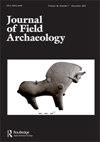Museum “Diaspora” Collections for Archaeological Research: Edo-Period Shogun Family’s Funerary Lanterns Outside Japan
IF 1.5
1区 历史学
0 ARCHAEOLOGY
引用次数: 0
Abstract
ABSTRACT This paper advocates using museum collections for archaeological research by offering a new approach to generate questions on the sociocultural lives of ancient people. I define “diaspora” collections as historical and archaeological artifacts excavated in a homeland site but currently stored in museums that are outside the homeland country. Of particular importance in this approach is the identification of artifacts’ diagnostic traits, including material composition, morphology, and symbolic decoration, that are to be linked to the “original” data in their homeland. Diaspora collections-based research necessitates provenience studies, as well as direct observation of both the diaspora collection and its original data. It also takes advantage of the recent development of various digital and remote technologies. A case study to show this methodology comes from dedicatory lanterns currently stored outside Japan that were part of the shogun (Tokugawa) family’s graveyards in modern Tokyo during the 18th and 19th centuries a.d.博物馆“散居”考古研究藏品:江户时代幕府家族在日本以外的葬礼灯笼
摘要:本文主张利用博物馆藏品进行考古研究,为研究古代人的社会文化生活提供一种新的途径。我将“散居”收藏品定义为在故土遗址出土的历史和考古文物,但目前存放在故土以外的博物馆。在这种方法中,特别重要的是识别人工制品的诊断特征,包括材料组成、形态和象征性装饰,这些特征将与它们家乡的“原始”数据联系起来。基于散居侨民收集的研究需要出处研究,以及对散居侨民收集及其原始数据的直接观察。它还利用了最近各种数字和远程技术的发展。一个展示这种方法的案例研究来自于18世纪和19世纪存放在日本境外的供奉灯笼,这些灯笼是现代东京幕府将军(德川)家族墓地的一部分。
本文章由计算机程序翻译,如有差异,请以英文原文为准。
求助全文
约1分钟内获得全文
求助全文
来源期刊

JOURNAL OF FIELD ARCHAEOLOGY
ARCHAEOLOGY-
CiteScore
4.60
自引率
5.30%
发文量
29
期刊介绍:
The Journal of Field Archaeology is an international, refereed journal serving the interests of archaeologists, anthropologists, historians, scientists, and others concerned with the recovery and interpretation of archaeological data. Its scope is worldwide and is not confined to any particular time period. Contributions in English are welcomed from all countries.
 求助内容:
求助内容: 应助结果提醒方式:
应助结果提醒方式:


